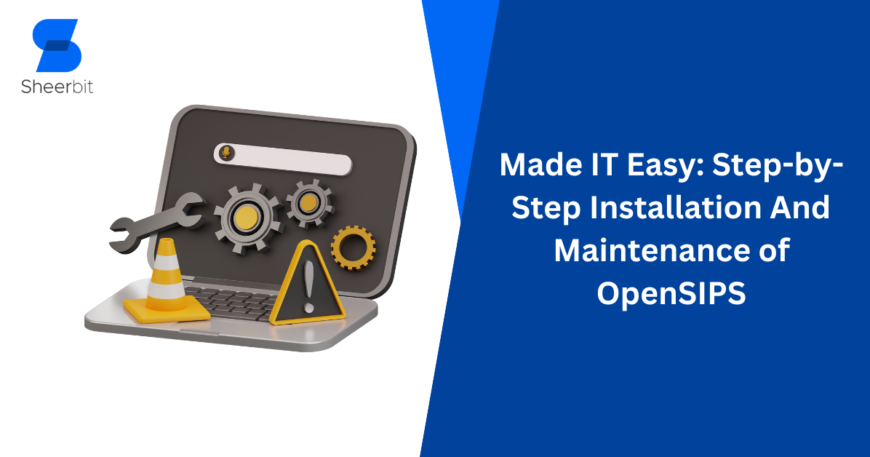VoIP technology is a critical component of contemporary communication infrastructure and is the industry leader in today’s digital world. Leading the way is OpenSIPS, a solid SIP server well-known for its versatility and durability in facilitating smooth real-time connections. Understanding the intricacies of OpenSIPS installation and maintenance is crucial as more enterprises turn to VoIP solutions to satisfy their changing communication needs. As a lighthouse, this book helps organizations explore OpenSIPS’s capabilities with clarity and confidence by highlighting the complex actions needed to build and maintain the system.
VoIP is the pulse of modern communication, and OpenSIPS stands out as a source of innovation and dependability. Understanding how to install and maintain OpenSIPS becomes essential as more and more businesses use VoIP solutions as the backbone of their operations. With the help of this thorough manual, we will take you on a trip to understand the complex procedures involved in establishing and maintaining OpenSIPS, giving companies the knowledge and resources they need to realize the full potential of this platform. Together, let’s traverse the world of OpenSIPS so that businesses may effectively and precisely exploit the potential of real-time communication.
Understanding OpenSIPS:
OpenSIPS is a potent middleman that manages SIP signaling, registration, and other essential VoIP communication functions. Its modular architecture and comprehensive feature set make it a top option for businesses looking for scalable and adaptable SIP solutions.
Step-by-Step Installation Guide:
1. Prerequisites:
Before beginning the installation procedure, confirm that your system satisfies the following requirements:
- Linux-based operating system (e.g., Ubuntu, CentOS)
- Adequate system resources (CPU, RAM, storage)
- Basic familiarity with the command line interface
2. Installation:
To install OpenSIPS on your machine, follow these steps:
Update Package Repositories:
To update package repositories, use `sudo yum update` (for CentOS) or `sudo apt update` (for Ubuntu).
Install Dependencies:
Use `sudo apt install` or `sudo yum install` to install the dependencies needed, including the libraries and development tools that OpenSIPS requires.
Download OpenSIPS:
Get the most recent version of OpenSIPS from the repository or official website.
Compile and Install:
Go to the directory where the download was made, use `make` to build the source code, then `make install` to install OpenSIPS.
3. Configuration:
Configure OpenSIPS to meet your unique needs after installation:
- Edit the installation directory’s {opensips.cfg} file, which is the primary configuration file.
- Adjust SIP listening ports, database connections, routing logic, and other factors based on your network architecture and preferences.
- Use the command-line program `opensipsctl` to test the setup and fix any problems or warnings to ensure everything works properly.
Maintenance Best Practices:
Proactive monitoring, sporadic upgrades, and necessary troubleshooting are all part of maintaining OpenSIPS. The following best practices will help to guarantee that your OpenSIPS implementation runs smoothly:
- Using built-in OpenSIPS modules or monitoring tools, regularly monitor SIP traffic, resource use, and system performance.
- Keep up with the most recent security updates and releases from the OpenSIPS community to fix bugs and improve functionality.
- To prevent data loss or corruption, put automatic backup mechanisms in place to protect databases, call logs, and important configuration files.
- To reduce the chance of service interruption, provide a testing environment where modifications or upgrades may be replicated before implementing them in the live environment.
Conclusion:
In conclusion, organizations may effectively utilize VoIP technology, optimize communication processes, and provide better customer experiences by learning how to install and maintain OpenSIPS. You may realize the full potential of OpenSIPS and maintain your competitive edge in today’s ever-changing communications environment by adhering to the above-mentioned step-by-step instructions and using best practices for maintenance.
Please do not hesitate to contact our specialists for additional help or questions about the installation, setup, or customization of OpenSIPS.
Are you prepared to use OpenSIPS to turbocharge your communication infrastructure? Contact us now to discuss custom options and discover how your company may benefit from real-time SIP conversations.





